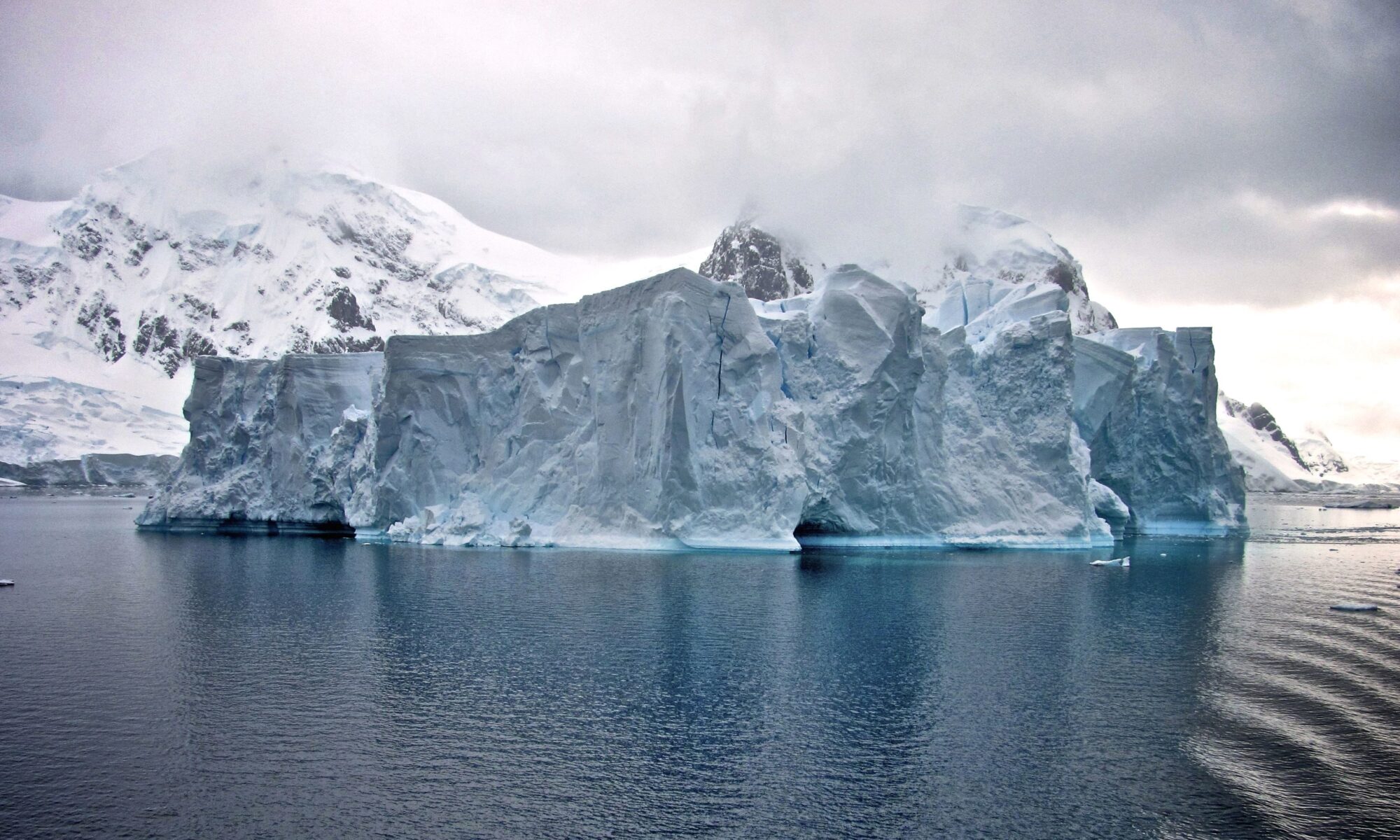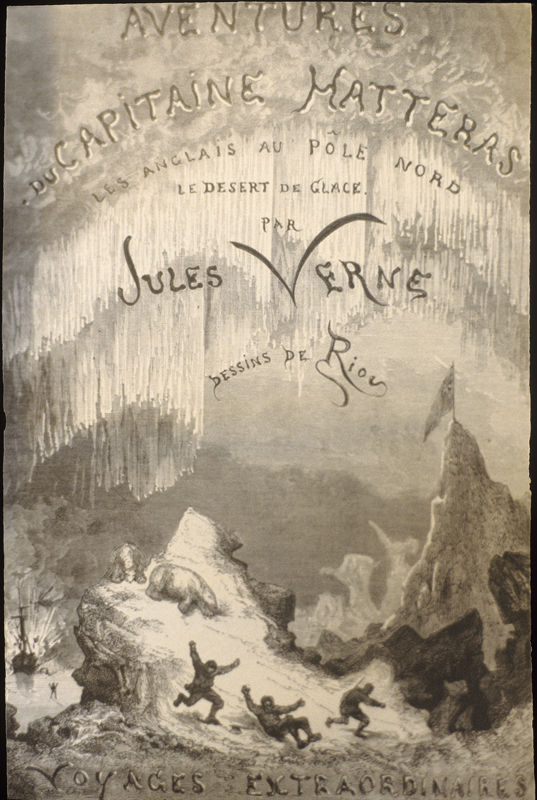French, 1828–1905
The Adventures of Captain Hatteras. The English at the North Pole; The Desert of Ice, 1867
Illustrator: Édouard Riou (French, 1833–1900)
7 ¼ x 11 in. (18.5 cm x 27.7 cm)
Special Collections, Lemieux Library and McGoldrick Learning Commons, Seattle University
Jules Verne, credited with pioneering science-fiction writing, was inspired by the expeditions launched in search of the lost explorer John Franklin. The author’s hero in The Adventures of Captain Hatteras was obsessed with finding the North Pole. He navigates though the ice-bound ocean before sailing across open waters to a volcanic island. After determining that the North Pole lay within the volcano, Hatteras jumps into the crater. He returns home a shattered man, living the rest of his life in an insane asylum, always walking northward.
One example of Verne’s interest in science emerges in his description of the optical phenomena of parhelia and paraselene, mystical double halos around the sun or moon formed as the result of ice crystals in the air. Verne’s fascination with the poles culminated in his Antarctic novel, The Sphinx of the Icefields, in 1897.

